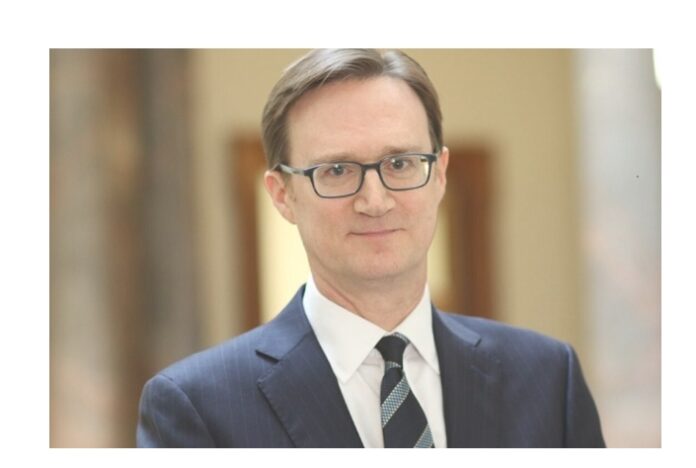UK Commission suggests prioritizing data-driven insights for the next International Education Strategy and highlights vulnerabilities in the sector despite growth.
Lack of diversity has been observed in student source markets for the UK as students are mainly from countries in Asia and Nigeria.
Concentration of international enrollments in one-year master’s programs is increasing.
The International Higher Education Commission, with the support of Oxford International Education Group, has recently published a report that provides valuable data and context regarding international education offered by UK providers.
The report, titled: “International Education Strategy 2.0,” aims to review the UK’s 2019 International Education strategy.
In the report’s foreword, the Chair of the Commission, the Rt Hon Chris Skidmore, MP, emphasizes the urgent need to develop an optimal approach for the UK’s upcoming International Education Strategy.
He notes that there are growing concerns about the direction of the existing strategy, its implications for the sector and stakeholders, and the possibility of future policy changes relating to international student visas.
Given the changing geopolitical landscape since 2019, there is speculation that these policy announcements may not align with the crucial social and economic role played by UK higher education.
Skidmore points out that the information collected for the report unequivocally demonstrates that now is not the time for complacency.
The current high numbers of international students are largely a result of specific circumstances and are unlikely to be sustainable in the long run.
Notably, in the academic year 2020/21, international enrolments in the UK surpassed the target of 600,000 by 2030 outlined in the International Education Strategy, achieving this milestone ten years ahead of schedule.
Skidmore identifies several threats to the resilience of the UK’s international education sector, including a shift in sending markets, with a decrease in students from the EU and an increase from non-European countries.
There has also been a significant loss of diversity in these sending markets, as well as a greater reliance on India and a less predictable Chinese market.
Additionally, the “Research talent pipeline” has been disrupted, resulting in a decline in undergraduate and postgraduate enrolments.
The rising popularity of one-year master’s programs, which incur higher recruitment costs for international students, is another concern.
Moreover, non-completion rates among students are increasing, accommodation costs are on the rise, and there is a lack of consistent data and data collection systems to inform decision-making regarding international student recruitment.
Importantly, Skidmore emphasizes the necessity for data that would enable a more robust case for highlighting the crucial role of international students within the entire UK higher education infrastructure.
Without a doubt, UK’s education system would face significant challenges if international enrolments were to decline precipitously.
Mr Skidmore highlights several threats to the resilience of the UK’s international education sector:
Shifting sending markets: Fewer students from the EU and more from non-European countries.
Significant loss of diversity in sending markets.
Greater reliance on India and a less predictable Chinese market.
Disrupted “research talent pipeline”: Declining undergraduate and postgraduate enrolments.
Increasing popularity of one-year master’s programs with higher overseas recruitment costs.
Rising non-completion rates among students.
Escalating costs of accommodation.
Lack of consistent data and data collection systems for informed decision-making on international student recruitment.
The report notes the following:
1. Assumptions about other markets
Assumptions about other markets offsetting enrolment losses from the EU and China are incorrect.
These include assumptions that other markets such as Nigeria will offset enrolment losses from the EU and China and that the UK’s record-breaking international enrolments in 2021/22 means its brand is strong and that it is back as a leader in the competition for overseas students.
2. Post-study work rights track with enrolment trends
Stagnant growth in international enrolments from 2012 to 2019 due to strict post-study work policies
Reversal of policies in 2019 led to increased enrolments.
Indian, Pakistani, and Nigerian students showed significant demand after the restoration of post-study work rights.
3. International enrolments are less diverse than in the past
Top sending markets as far back as 2000 (Greece and Ireland) are no longer the case.China and India now account for 41% of all international enrolments.
4. Higher recruitment costs for one-year masters
Growth in international enrolments for one-year master’s degrees.
Increased costs associated with shorter education cycles and annual recruitment for master’s programs.
5. Programs at risk if enrolments fall.
International students do not replace the place for domestic students.
Declining international enrolments have significant implications for programs.
Some master’s programs are heavily reliant on Indian students, making them vulnerable to market declines.
The report concludes by saying,
“Without urgent actions to diversify markets and ensure a more balanced distribution of international students across programs of study, the UK HE sector is potentially in an extremely vulnerable position.”
The report bears an urgency with it due to the ban on international students bringing their dependents from 2024.
The report concludes by stating:
“Recent enrollment growth has been largely driven by historically dynamic markets i.e., non-EU countries and we cannot be certain that growth from these markets will be sustained.
The EU should form a key part of a diverse recruitment portfolio for UK institutions … once stabilized, European student recruitment flows may be less susceptible to short-term shocks than other sending regions.”
Skidmore argues that better data would help to make a clearer case for the vital role of international students in the entire higher education infrastructure in the UK – a system that would be in bad shape should if international enrolments continue to decline.
Naiametrics














